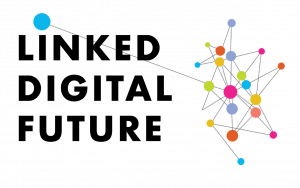Here is an excerpt from an excellent blog post originally published on Medium. This excerpt is republished with permission from the author, Margaret Lam.
The Relevance of Information Representation in the Performing Arts
As you may already suspect, this isn’t only of interest to humanities scholars who must evolve in the context of a digital society; it has real-world implications in the arts and culture sector. Daniela Rosu, a computer scientist and post-doctoral fellow at the Centre for Social Services Engineering, specializes in co-developing the core of advanced computational systems in domains such as medicine and social science. She offered some real-world examples of challenges that the arts sector will need to respond to in the form of questions:
How might a machine use the publicly available audience responses and reactions to various shows to create a personalized “critic”? What kind of values would this machine have? What kind of art would it prefer over others? What if previews and synopses of shows are automatically generated based on such a “critic”, and directly influence audiences’ decision as to what shows they will attend?
Perhaps the most critical question of all: if machines will have such powerful influence over the careers of artists and their creations, are there artists at the table when these technologies are being developed?
The Canadian Performing Arts Sector’s Response
In the short-term, there is a critical need to keep up with the most influential machines on the internet: search engines and voice assistants. There are standardized web “housekeeping” practices that can be done to structure online public event information to improve their discoverability, such as setting up single web pages for individual events, to ways to improve the discoverability of event information when using event plug-ins for WordPress.
Many arts institutions are getting better at all this, having been introduced to it by organizations like Culture Creates, CAPACOA’s Linked Digital Future Initiative, Digital Arts Nation and independent consultants that work in this space. However, we are still a long way from ingraining these practices into individual artists and arts organizations who maintain a digital presence.
What Bay-Cheng’s talk emphasized is the more long-term and complex need to influence the way these powerful machines understand the arts. This is a priority area for the Canadian performing arts sector that Culture Creates, CAPACOA and their partners have worked tirelessly over the last few years to address. In particular, they have focused on the work involved in linking up existing data from different organizations with each other, and figuring out the best way to make them available to machines as linked open data.
Slide from Aug 21, 2020 presentation (courtesy of Mariel Marshall)
In this process, there is a constant need to translate human language, which is full of nuances and shades of grey, to computer language, which is quite rigid and clearly defined. We do this by creating taxonomies and ontologies, which is the lens through which machines know what meaning to give certain words, concepts and relationships between them.
Taxonomies are no means perfect representations of the world, and nor are they intended to be. As Rosu elegantly puts it, there is no “one taxonomy to rule them all”, rather we need a multitude of taxonomies to reflect the needs of different domains and perspectives. When we put together multiple taxonomies across domains, we get an ontology, which identifies and distinguishes concepts and their relationships.
As important as it is to get the representation of performing arts information “right”, small and medium sized organizations simply do not have the capacity or bandwidth to engage in this work in a meaningful way. Yet, having a diverse representation of artists and patrons involved in the process is probably one of the most critical success factors. It is the only way to ensure that the art world as artists and patrons see it is represented in the world of machines. By extension, it is also the only way to make sure that the machine works for us, not the other way around.
You can read the full blog post on Medium.
Performing Arts Representation Information W3C Community Group
Mariel Marshall, Daniela Rosu and Sarah Bay-Cheng have created an open community group under the umbrella of the World Wide Web Consortium (W3C). The Performing Arts Information Representation community group is dedicated to advancing the use of shared conceptual models for better data interoperability in the performing arts domain. The mission, scope and processes for the community group are defined in this chart.






Leave a Reply
Want to join the discussion?Feel free to contribute!